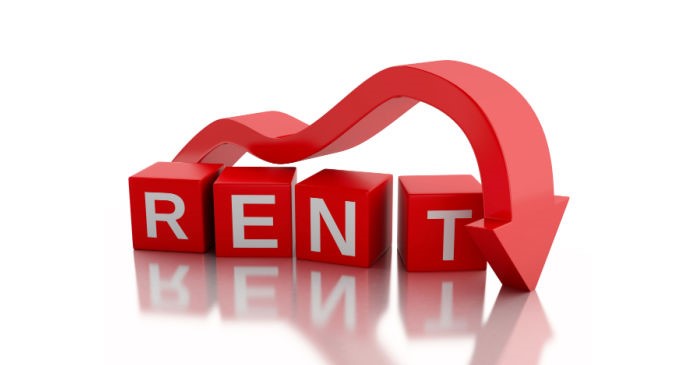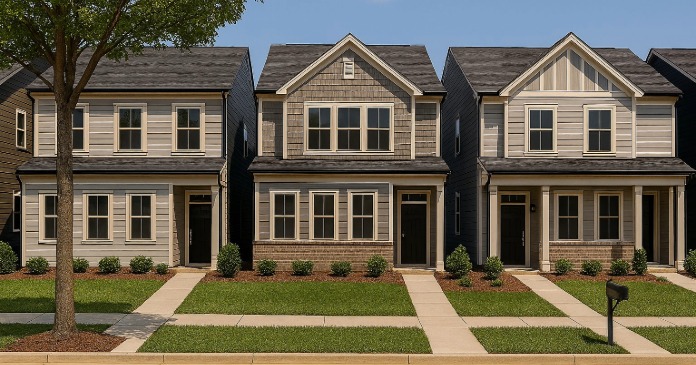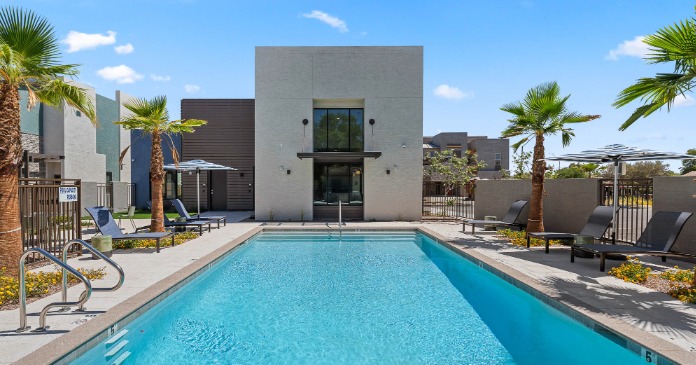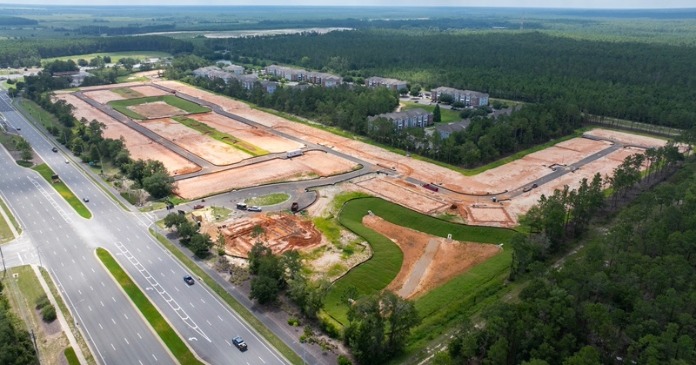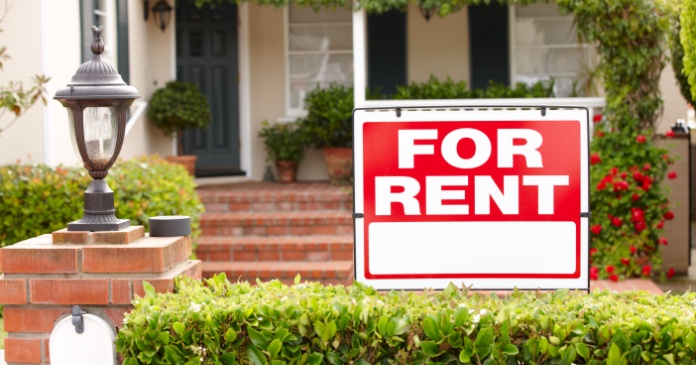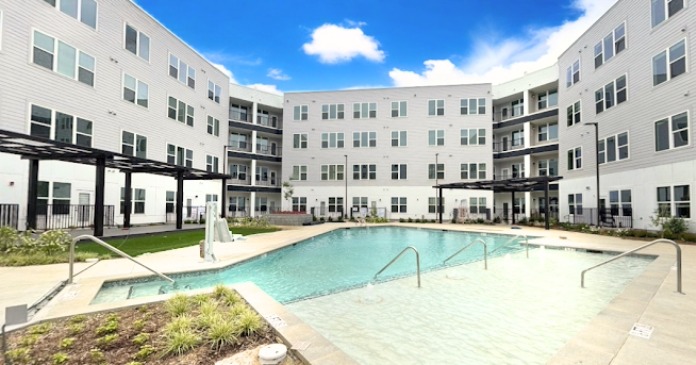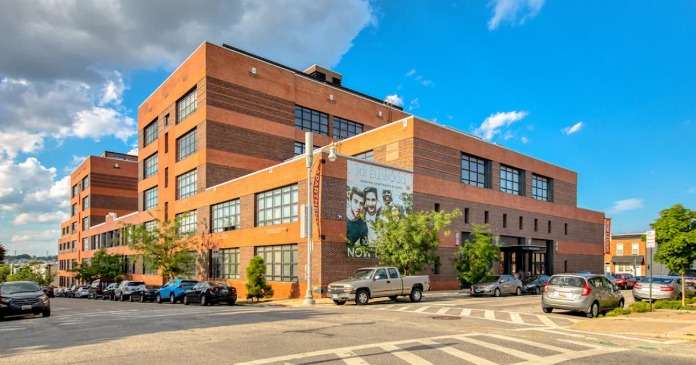Yardi Matrix reported that national average apartment rent growth turned negative in December with rents falling $4 from November’s revised level to $1,715 per month.
YoY rent growth rate slide continues
The national average asking apartment rent was up 6.2 percent in December from its year-earlier level. This rate of increase was down 0.8 percentage points from that reported last month. This was the tenth month in succession with a flat or declining rate of year-over-year rent growth.
Year-over-year rent growth for leases that were renewed was 11.8 percent in October. The national average lease renewal rate was 64.9 percent.
Rents in the “lifestyle” asset class, usually Class A properties, rose 4.8 percent year-over-year, while rents in “renter by necessity” (RBN) properties increased by 7.8 percent year-over-year. The chart, below, shows the history of the year-over-year rent growth rates for these two asset classes along with the difference between these rates.
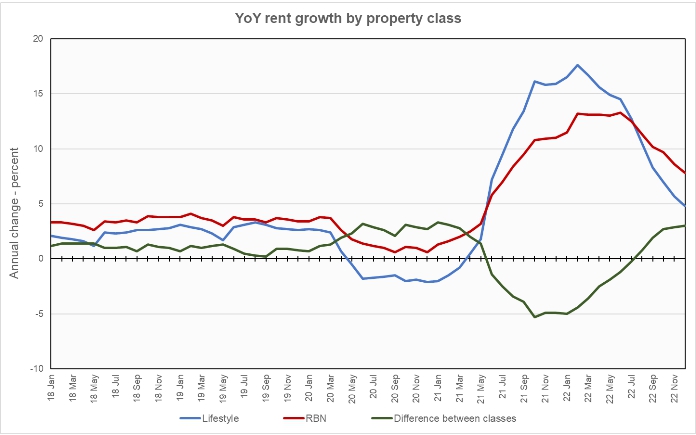
The chart shows that the rates of year-over-year rent growth for the two classes of rental properties remain elevated from their pre-pandemic levels. However, their recent movements have them trending toward a return to pre-pandemic levels.
Yardi Matrix also reported that single-family rental (SFR) rents fell $8 from the revised level of the month before to $2,083 per month. The year-over-year rent growth rate fell to 4.8 percent. The national occupancy rate for single-family rentals slipped slightly to 95.8 percent in November. Occupancy was down 1.4 percentage points from its level one year ago.
Looking beyond rent growth
Yardi Matrix now reports on other key rental market metrics in addition to rent growth. These include the average rent to income ratio, the rent growth rate for residents who renew their leases and the portion of residents who do renew. The metro averages are included in the tables below, but the report also includes the rent to income ratios for both lifestyle and for RBN properties.
Of the top 30 metros by population, the ones with the largest annual apartment rent increases as ranked by Yardi Matrix are given in the table, below, along with their annual percentage rent changes, overall rent to income ratio, rent growth for renewed leases and renewal rate for the month. The data on asking rent growth is for December. The other data is for November.
| Metro | YoY asking rent growth % | Rent to income ratio % | YoY renewal rent growth % | Monthly lease renewal rate % |
| Indianapolis | 11.0 | 25.7 | 9.4 | 66.9 |
| San Jose | 9.0 | 27.4 | 8.4 | 50.0 |
| Kansas City | 8.3 | 24.2 | 8.7 | 71.6 |
| Miami Metro | 8.1 | 27.8 | 19.2 | 67.6 |
| Orlando | 8.0 | 32.2 | 16.6 | 69.8 |
| Dallas | 7.5 | 27.4 | 13.3 | 63.0 |
| Nashville | 7.5 | 30.5 | 10.1 | 58.7 |
| Charlotte | 7.3 | 27.3 | 13.8 | 62.7 |
| Portland | 7.2 | 29.5 | 10.8 | 61.9 |
| New York | 7.1 | 34.6 | 14.2 | 68.7 |
The major metros with the smallest year-over-year apartment rent growth as determined by Yardi Matrix are listed in the next table, below, along with the other data as in the table above.
| Metro | YoY asking rent growth % | Rent to income ratio % | YoY renewal rent growth % | Monthly lease renewal rate % |
| Las Vegas | 1.4 | 30.2 | 12.9 | 65.2 |
| Phoenix | 1.4 | 28.7 | 13.8 | 63.4 |
| Twin Cities | 2.5 | 25.4 | 5.1 | 62.5 |
| Baltimore | 2.6 | 32.5 | 9.1 | 70.2 |
| Sacramento | 3.4 | 29.4 | 8.8 | 57.7 |
| Atlanta | 3.5 | 29.7 | 11.6 | 65.5 |
| San Francisco | 3.8 | 27.2 | 4.0 | 48.5 |
| Washington DC | 4.2 | 30.1 | 9.4 | 58.6 |
| Inland Empire | 4.3 | 30.9 | 10.5 | 59.8 |
| Austin | 4.4 | 25.5 | 11.9 | 58.1 |
The top metros for month-over month rent growth in December were New York, Indianapolis and Houston. These were the only ones of the 30 metros tracked that saw positive rent growth for the month. The metros with the lowest month-over-month rent growth were Boston, Raleigh and Inland Empire.
Multifamily at the crossroads
The discussion section of this month’s report focused on the impact of the Federal Reserve hiking interest rates in order to combat inflation. While interest rates are currently not that high in inflation-adjusted terms, their rapid rise has weighed on the single-family housing market and threatens to push the economy into recession. Slowing job growth during a recession can reduce household formation which would reduce demand for apartments. However, a rebound in immigration will tend to support demand. At the same time, 400,000 units are expected to be delivered in 2023. Which of these cross-currents ends up being most significant will determine the direction of the market.
SFR market also softens
Yardi Matrix also reported on the top 34 metros for single family rentals. This month, 27 of the 34 metros covered saw positive year-over-year rent growth. The leading metros for year-over-year rent growth were Sacramento, Washington D.C. and Indianapolis.
This month, 27 of the metros saw year-over-year declines in occupancy rates. The leading metros for year-over-year SFR occupancy growth were Raleigh, Pittsburgh and Baltimore. Washington D.C, Las Vegas and Seattle saw the greatest SFR occupancy declines.
Yardi Matrix pointed to a recent trend of home sellers giving up on selling their homes and instead converting them to rentals. Nationally, 9 percent of home sellers took this step in November. This additional supply of SFR housing may put extra downward pressure on rents.
The complete Yardi Matrix report provides information on some of the smaller multifamily housing markets. It also has more information about the larger multifamily markets including numbers on job growth and completions of new units. It includes charts showing the history of rent changes in 18 of the top 30 markets over the last 4 years. It can be found here.


